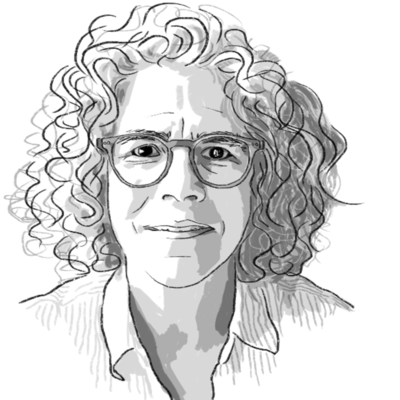Error loading media: File could not be played
00:0000:0000:00
00:00
 Clara Germani
Clara Germani
After the torrents of March created waterfalls in normally dry Orange County, California, canyons, Laura Cohen and I were clearing brush and planting together in the native garden at Laguna Coast Wilderness Park. She could barely get a sentence out without an exclamation: “Listen! A titmouse!” “Ca-ca-ca-ca! Hear that Cooper’s hawk?” “Look! Blue-eyed grass!”
Walking with Laura – the recently retired resource specialist at this glorious 7,000-acre preserve, saved three decades ago from development – makes me think of a sparrow flitting through creation: She’s hyperaware but gently ready for nature’s next surprise.
For 16 years, until last month, Laura was the beloved but firm public face of the park, creating and running the interpretive programs. She kept an eye out for succulent thieves and their innocent counterparts, children picking flowers; for dogs (don’t get her started on how their presence can disturb the peace of the pocket mouse); and for rattlesnakes that slither under the nature center doors.
She taught about plants and animals and nature’s cycles, and she was inspiring. One 5-year-old whom Laura first taught at a raptor-themed family day is now in college working with some of the country’s top ornithologists: “But I wouldn’t take responsibility for it. She just had the love of it, you know?”
That “love of it” keeps Laura at the park after retirement; she’s now donating her time, like me and a legion of other Laguna Canyon Foundation and Orange County Parks volunteers taught by her to clear vegetation, plant, patrol trails, and answer park phones.
I asked her about Earth Day, and she offered this advice: Real love for nature is respect for nature. Revel in it, she says, but stay on the trail. Resist picking a flower. “People forget that they are one of 100,000 or more doing the same thing.”
She added, “I hoped through my job to help people better understand and protect nature because once it’s lost, it’s absolutely impossible to re-create the original living tapestry in all of its beauty and complexity.”
Indeed, it’s because of the Lauras of this world that we will “hear that titmouse.”

Our name is about honesty. The Monitor is owned by The Christian Science Church, and we’ve always been transparent about that.
The Church publishes the Monitor because it sees good journalism as vital to progress in the world. Since 1908, we’ve aimed “to injure no man, but to bless all mankind,” as our founder, Mary Baker Eddy, put it.
Here, you’ll find award-winning journalism not driven by commercial influences – a news organization that takes seriously its mission to uplift the world by seeking solutions and finding reasons for credible hope.
Explore values journalism About us